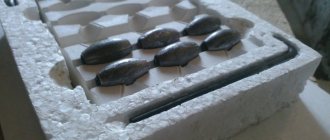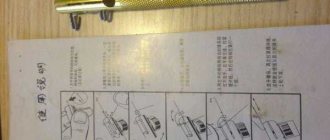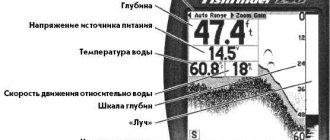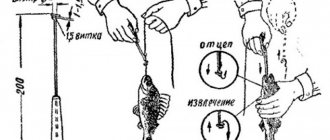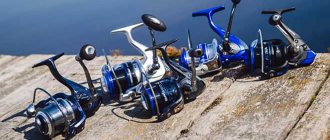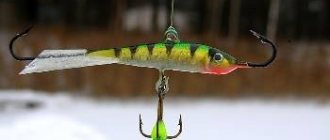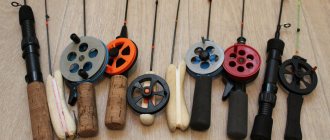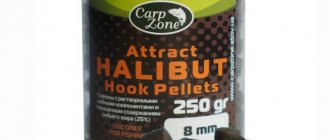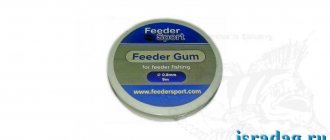Fishing is a pleasant pastime for many outdoor enthusiasts. And if for some fishing is a favorite pastime, for others it is a way of earning money. At the same time, you do not need to have any special training in order to fish. All you need to catch fish is good fishing gear. And today we will talk about gear with which the fisherman manages to store caught fish for a long time, and also conveniently transport it.
What is kukan
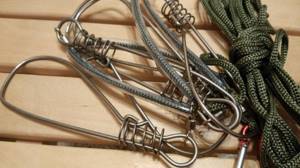
To be fair, I would like to note that the most popular equipment for storing caught fish is cages. At the same time, the cage is not convenient in some situations, for example, when fishing from a boat. Also, if your goal is a huge trophy specimen, then the cage will not be suitable, because it simply will not fit in it. It is in such cases that the best tackle option for placing fish is a kukan.
Kukan is a simple design, thanks to which the caught fish remains alive for a long time. After all, sometimes anglers can be fishing for quite a long time, and it will be important to keep the catch fresh for as long as possible. The procedure for placing the catch on the kukan is simple. To begin with, the caught fish is removed from the hook. After this, a small hole is made in the soft tissues of the fish’s mouth with a knife and a hook or loop is inserted into it (depending on what kind of fish is used), then it is closed and lowered into the water. You can also find fishermen who hook fish onto a kukan by threading a hook through the gills. This method has a right to exist, but the fish does not remain alive for long.
How to put fish on a kukan
There are 2 ways to mount fish:
- Through the mouth (a puncture in the lower, or in the lower and upper lips at the same time). For predators such as pike or pike perch, this particular method of baiting is suitable.
- Through the gills.
Pay attention to the product: with large clasps it is intended for putting fish on through the gill, with small ones through the lip.
It is best to cluck the predator's lower and upper lips at the same time. This will prevent the fish from opening its mouth. She will not be able to hurt you with her sharp teeth and, moreover, while moving on a boat, she will not choke or die prematurely.
If fishing is carried out from a boat, the kukan must be attached on the side from which casting will not be made. If you are fishing from the shore, you need to drive a peg into the ground and hook one end of the cukan to it. After the fish is caught, it must be put on the steel loop farthest from the fisherman, so that the next time the fish is caught, the kukan will not be completely pulled out of the water.
About
What does kukan consist of?
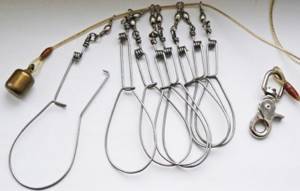
In general, different types of kukan are similar in structure. Standard tackle consists of the following parts:
- Soft-sheathed metal cable, synthetic cord, metal chain (the choice depends on the angler). It is the basis of the kukan; all other parts of the tackle are placed on it. The cable or cord can be of different lengths. When choosing, you should be guided by how much fish you plan to store on the kukan. As for strength, you need to take into account the weight of the caught fish. Typically, cables with a diameter of 0.3 mm and above are used. It is also important how soft and flexible the cable is, this is necessary for the convenience of transporting fish.
- Carabiners of different sizes. Also a very important element of gear. Loops or hooks are placed on them, on which the fish are directly stored. In addition, two large carabiners are used at the edges of the main cord or cable. This is done in order to hook the kukan to any convenient place for the fisherman (this could be the edge of a boat, a driven stake on the shore, a thin tree, etc.). Very often, when buying a kukan, fishermen do not pay attention to the quality of the carabiners, so be vigilant and purchase reliable carabiners made of high-strength steel.
- Swivels. They are the connecting link between the carabiners and the main cable.
- Hooks (wire loops). The fish are put on them, and such hooks have a special closing system so that the fish sits steadily and does not fall off.
- Inserts. Most often, tubes are used in the form of inserts. They serve to ensure that carabiners and hooks do not get confused with each other. They can be metal, plastic or rubber.
Many fishermen resort to creating kukans with their own hands. After all, in essence there is nothing complicated in its design. At the same time, you can save a lot. And very often it happens that there is simply no specialized fishing store nearby, so there is only one way out - to make kukan yourself.
What parts are needed to create a kukan with your own hands?
If you decide to make the kukan yourself, you will need the following parts:
- cable (needs about 5-6 meters), it should be cut into pieces. The large one (2 meters) will serve as the basis of the kukan, and the rest of the cable is cut into equal parts that will be needed to create loops;
- carabiners (large and small), 2 large ones will be at the edges of the cable, and small ones are used as holders for loops on which the caught fish will be put on;
- swivels, their number is equal to the number of loops;
- tubes that serve as limiters between the carabiners (to prevent the tackle from getting tangled);
- clamps (aluminum) that will be needed to create loops;
- hooks (made from bicycle spokes), used as an alternative to metal loops, due to their reliability and rigidity they have proven themselves very well among fishermen;
Do-it-yourself kukan for spearfishing
The catch equipment cannot be called cheap, so many spearfishing enthusiasts are trying to save at least something. And if it is unlikely that you will be able to find a suitable material and sew a wetsuit yourself, then anyone can make a reliable and safe kukan with your own hands. Some became so good at this business that they began making homemade kukans not only for themselves, but also for their comrades, as well as for sale. Moreover, they turn out no worse than factory products, and sometimes even better quality and easier to use.
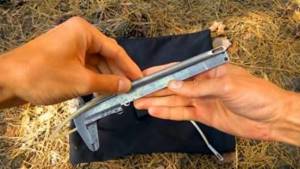
There are several ways to make a kukan for spearfishing, but the essence is the same for all: you need to make a metal needle with which to attach the fish, and connect it to a flexible element of the required length. The function of the latter can be performed by any strong rope (preferably braided), a cord from an old electrical appliance, or a metal cable. The fact that a cable is the best choice has already been mentioned above.
An excellent needle is made from a metal tube with an internal diameter of 0.5 cm, but it will take a little work to make it part of the trick equipment. It is necessary to find a suitable tube, preferably made of aluminum or stainless steel, otherwise corrosion will quickly ruin the homemade kukan. Such pipes are sold in stores specializing in auto parts, but you should not rush there and spend money, because one of the main goals of making a kukan with your own hands is to save money. It is quite possible that you can find such a thing in your own garage; you just need to set aside half an hour for a small inspection.
So, what to do after you have found the right tube? If its length is less than 12 cm, then you will have to look for another one, since it is inconvenient to use a needle that is too short. The long tube should be shortened to the optimal length, which is 15-16 cm. On one side, it must be cut at an acute angle and the cut should be treated with sandpaper to remove burrs. This will be the tip of the needle tube. At this stage, work with this workpiece is not finished. You need to drill two more through holes in it, 2 and 4 cm away from the blunt end. They will be needed to attach the flexible element.
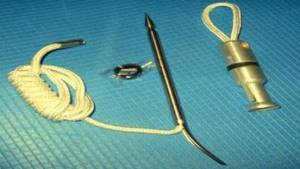
An ideal version of a homemade kukan thread would be a clothes cord, which is a metal cable protected by a polyethylene sheath. Everyone chooses its length according to their preferences. When the desired piece is cut, the first step is to seal the polyethylene at its ends, using a lighter or candle. Then it is inserted into the tube from the blunt side for 6-7 centimeters (so that it does not come out at the sharp front part) and is fixed with nails driven into the holes. The caps and protruding ends of the nails are bitten off with pliers, the remaining parts on the outside are flattened with a hammer and then smoothed with a file.
Popular articles Ceramic floristry: the art of creating flowers from polymer clay and cold porcelain
At the other end of the cable, a loop is made for attaching to a carabiner. The easiest way to make a loop is as follows: cut a 4-5 mm thick ring from the rest of the tube, squeeze it slightly (give it an oval shape), thread 10 cm of cable, bring the end back and flatten the ring with a few blows of a hammer. That's all, actually. An hour and a half of work, and the kukan is ready. The only thing it lacks is a cover to cover the needle. A piece of rubberized hose can handle this task quite well.
There is no way to do without this important element, because any kukan, including homemade ones, should pierce the fish, and not the diving suit
Video on the topic:
Spearfishing: DIY Kukan 13:00
Equipment for underwater hunting. Kukan Dokuchaeva 2 methods of fastening. 04:52
Do-it-yourself kukan for spearfishing. 02:40
Kukan underwater hunter 06:23
Tips for using kukan
Despite the fact that the kukan is the best design for preserving and holding a large predator, its use may not only not bring the desired result, but also harm the pike. This happens when a predator, when caught, severely tears the lip and significantly damages the gill cavity or lower jaw. Keeping such fish on a kukan will lead to its rapid death.
In cases where the predator has swallowed the hook too deeply, do not try to pull it out of the esophagus. It is better to leave it for a while, placing the pike on the kukan, and without causing unnecessary injuries to it. It has been observed that a predator with a single hook in the esophagus is able to survive on a kukan for 4-5 hours.
When making a kukan with your own hands for pike, or any other predator, remember that the fish attached to it remains quite active for a long time. If the trophy consists of several large individuals, try to keep it at some distance from the fishing spot, since the noise in the water can scare away other fish.
Source: fishelovka.ru
To preserve the caught fish, everyone chooses a place according to their taste, as well as based on the planned quantity and quality of fish. For some it will be a mesh cage, for others it will be a mayonnaise jar, but hunters most often use kukan for this purpose.
The kukan is usually attached to the athlete’s belt, but if you are using a buoy, then there is nothing more convenient (and even safer in the tropics) than attaching the kukan to the buoy. It is also possible to duplicate: one kukan on the belt, and the other (others) on the buoy. Fish nets called “bras” are very popular in river hunting, especially in central Russia. A “bra” is a tube made of fine mesh with an elastic band threaded around the edges. They are worn over a suit. Small fish or crayfish are pushed under the elastic and end up in a cage limited by the swimmer’s body and the net.
You can attach a mesh bag to the buoy and put the fish there, or you can use a children's inflatable boat for this purpose instead of a buoy. And, of course, it’s most convenient when there is a boat next to you all the time and you send every newly shot fish there. But even in such a situation it is good to have a kukan.
The simplest kukan can be made in 5–10 minutes from a suitable piece of stainless, steel or even aluminum (but thick and rigid) wire. By tying it to a buoy with a piece of twine or attaching it to your belt, you can start hunting.
Much more practical is a metal needle with a cord tied to a hole in the center, and sharpened enough on one side. The needle can be a steel tube, a piece of a harpoon, or simply a strip of metal with a hole in the middle for a cord or cable.
At sea, where the fish are small and there are few of them, the best cord is a thick fishing line, and in the river, a thick braided steel cable or a tightly woven nylon cord 6–8 mm thick is more reliable. The root end of the kukan is attached with a carbine directly to the weight belt or buoy, and its working part hangs freely under the buoy or is inserted into the belt.
Hunting without a buoy requires attaching the cukan to the belt with a carabiner or a winding ring.
Its free end - the needle - is attached to the belt with a carabiner or tightly inserted into a rubber tube mounted on the belt. But the most correct solution, in my opinion, is to simply insert a kukan needle into the rubber belt.
The tip of the needle can also be made in the form of a carbine; Having landed the fish on the kukan, you just have to fasten the needle to the steel ring on your belt. Often such a ring can be a structural part of a belt or one of the weights.
Dnepropetrovsk hunters use a soft nylon tape 15–25 mm wide with a long wire tip as a kukan. The kukan is passed through the gills and mouth of the fish, the tape does not tear or cut the gills, and the fish behaves calmer on the kukan.
Another way if you need to preserve fish and keep it alive for a long time. The essence: the cord is inserted into the mouth of the fish, released from under the gills, passed over the head and through another gill cover again into the mouth, the prey ends up in the rope bridle. The method is used mainly for catfish, but is applicable for other fish too.
To prevent your trophy from floating away if you accidentally let go of the kukan needle from your hands or the carabiner comes unfastened, counterparties are made on the needle - flags, such as on a harpoon. As an option, the needle shank is cut obliquely and bent, which will prevent the fish from coming off.
In my opinion, for large fish, the simplest, most reliable and easy-to-manufacture kukan is made from a piece of steel, stainless steel cable, one end of which is turned into a loop, and on the other a stainless tube of suitable diameter is put on and riveted. Kukans made from a rope are very popular - an analogue of a kukan made from a cable. A soft, densely weaved cord: a nylon cable 6–8 mm thick is embedded in a needle, and at the root end there is a loop for fastening. This soft kukan is ideal for hunting eels and “white” fish (ide, bream, chub).
How to properly place a fish on a kukan? There are not many opinions on this matter. The most common method is through the gills into the mouth, but it is also the most risky: fish, especially non-predatory ones, easily tear the bridge between the gill slit and the mouth. And even if the needle is unfastened from the fastening on the belt, it can slip through the gills: you will lose the trophy and spoil the fish, not good!
The most correct way is from eye to eye, then the cable passes through the eye sockets and the fish is held securely; True, they may tell you that this is, they say, cruel... Then pin the fish and put it on the kukan that is already dead, it is much more immoral to lose an already shot fish because you unsuccessfully put it on the kukan. A medium-sized white fish of 1–3 kg has sufficient strength and can still tear the bridge of the nose, while a soft piping cord will prevent it from moving along the cable and soften the jerks. You need to thread the fish through the eyes in such a way that on the kukan the prey is positioned with its belly towards the hunter’s body, then the fish spines will not injure you or tear the suit.
If the kukan is on a buoy, and you are shooting predators (pike perch, pike, catfish, and at sea also scorpionfish), it is convenient and useful, for safety reasons, to place them through the lower lip or through both at once. This achieves minimal hydrodynamic resistance when towing, strong jaws do not allow the fish to tear the tissue and get off the kukan, and in this way more prey can be packed onto the kukan, which is especially important in competitions.
The catfish needs to be hooked only through the lower lip, this is both convenient and reliable; If the pike is on your belt, you can pierce a pike through both jaws, closing its “beak” and then not be afraid of getting hurt on the sharp teeth in the open “bread slicer.” The eel's spine must be cut by piercing it with the sharp end of a cukan through the anus or just behind the head. For eels, they even make special kukans from a very stiff cable with a needle sharpened like a sharp triangular bayonet. We stick the tip of the kukan into the anus of the fish and use the sharp edge to break the spine, then pierce it further through, and the fish hangs on the kukan, pierced across. The only drawback of this method is that during smoking you will need to secure the tail of the fish so that it does not fall into the smoker.
What about mullet, grayling, and trout—tender and strong fish? By inserting the kukan from below under the gills, they pierce the fish’s head and damage its brain. Moreover, the fish, turned sideways, acts as a kind of bait - a spinner, attracting other fish.
But, in any case, having placed the fish on the kukan, you need to pin it, immobilize it by piercing the brain or the base of the spine with a harpoon, the sharp end of the kukan or a knife. By pinning the fish, you are “killing two birds with one stone,” or even more. You immobilize the fish and eliminate the source of disturbance for the next potential prey, simplify transportation. In addition, killed fish are easier to preserve.
From a fragment of a harpoon from an elastic band (tail part) you get magnificent kukans. All you have to do is sharpen the fragment and attach the fishing line left over from the same harpoon.
Next chapter >
Source: sport.wikireading.ru
